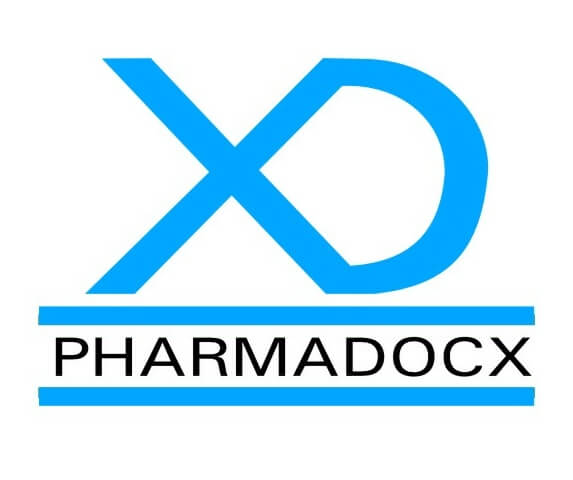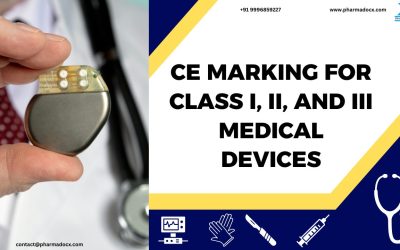General Safety and Performance Requirements (GSPRs) are a comprehensive set of criteria medical devices entering the EU market must meet. Outlined in EU MDR, they form the cornerstone of medical device regulatory compliance. GSPRs aim to ensure safety, performance, and regulatory compliance of medical devices throughout their lifecycle. GSPRs replace the “Essential Requirements” from the previous directives (MDD/AIMDD) and are mandatory for CE marking. Their core objective is to protect patients and users by enforcing rigorous design, manufacturing, and information standards. GSPRs cover everything from risk management, biocompatibility, and infection control to software validation, labeling, and clinical evidence. They apply to all device classes and types, including accessories and certain non-medical products. Thus, GSPRs serve as the foundation for conformity assessment, CE marking, and market access in the European Union.
What are general safety and performance requirements?
General Safety and Performance Requirements (GSPRs), outlined in EU MDR, are a comprehensive set of regulatory criteria all medical device must meet to be CE marked and placed on the EU market. Applicable to all device classes and type, GSPRs aim to protect patients and users. They outline rigorous design, manufacturing, and information standards. Risk management, biocompatibility, infection control, software validation, labeling, and clinical evidence are all under the purview of GSPRs. We have presented the core objectives of General Safety and Performance Requirements.
The GSPRs aim to:
- Ensure device safety: Minimize risks to patients, users, and third parties.
- Guarantee performance: Devices must perform as intended under normal conditions.
- Support clinical benefit: Require clinical evaluation to justify benefit-risk ratio.
- Promote transparency: Through clear labeling, traceability, and post-market surveillance GSPRs promote transparency.
- Align with global standards: Harmonize with ISO 13485, ISO 14971, and international principles.
- Enable lifecycle accountability: Cover design, manufacture, use, and disposal.
Transition from Essential Requirements to GSPRs
GSPRs under the EU MDR were previously known as Essential Requirements under the Medical Device Directive (MDD).
Why does the change matter?
- Broader scope: GSPRs cover more device types, including software and IVDs (under IVDR). Notably, software is now explicitly addressed.
- More detailed: GSPRs are more granular and risk-focused, aligning with modern technologies.
- Stronger clinical evidence: MDR emphasizes clinical evaluation and post-market surveillance.
- Digital traceability: GSPRs support UDI, EUDAMED, and lifecycle transparency.
- New requirements: GSPRs include cybersecurity and devices without a medical purpose
Key differences between the Essential Requirements and General Safety and Performance Requirements
We have highlighted the key differences between the old Essential Requirements (ERs) under the MDD/AIMDD and the new General Safety and Performance Requirements (GSPRs) under the EU MDR.
| Aspect | Essential Requirements (MDD/AIMDD) | GSPRs (EU MDR) |
| Regulatory Framework | Directive-based (national transposition) | Regulation-based (directly applicable) |
| Annex Location | Annex I of MDD/AIMDD | Annex I of MDR |
| Scope | Medical devices only | Medical devices and accessories |
| Terminology | “Essential Requirements” | “General Safety and Performance Requirements” |
| Risk Management | Implicit, less detailed | Explicit, aligned with ISO 14971 |
| Lifecycle Approach | Focused on design and manufacture | Full lifecycle: design, manufacture, post-market |
| Software | Barely mentioned | Dedicated section (GSPR 17) with validation and cybersecurity |
| Clinical Evaluation | Less prescriptive | Stronger emphasis on clinical evidence and benefit-risk justification |
| Labeling & IFU | Basic requirements | Expanded to include UDI, implant cards, electronic IFU, traceability |
| Substances & Biocompatibility | General mention | Specific references to CMR/ED substances, REACH, ISO 10993 |
| Environmental Safety | Minimal | Explicit requirements for disposal, packaging, and sustainability |
| Devices without Medical Purpose | Not covered | Covered (e.g., aesthetic devices) |
Key takeaway from Essential Requirements to GSPRs transition
- Audit readiness: GSPRs demand deeper documentation, traceability, and justification, especially for risk-benefit, clinical evidence, and software.
- Design inputs: You will need to align design controls with GSPR clauses, not just general safety principles.
- Labeling systems: UDI, implant cards, and electronic IFUs require digital traceability and harmonized templates.
- Substance control: CMR/ED and REACH compliance now directly impact GSPR conformity, especially for Class IIb/III devices.
Structured breakdown of the GSPRs: Chapter-wise requirements of the General Safety and Performance Requirements
The GSPRs are divided into three chapters:
Chapter I: General requirements (Sections 1–9)
These apply to all devices and include:
- Risk management: Medical devices must be designed to minimize risks and adverse effects.
- Performance: Medical devices must achieve intended performance throughout their lifecycle.
- Safety: Medical devices must not compromise patient or user safety under normal conditions.
- Benefit-risk balance: Benefit-risk ratio must be favorable and supported by clinical evidence.
- Chemical, physical, and biological properties: Materials must be biocompatible and safe.
- Infection and microbial contamination: Medical devices must minimize infection risks.
- Environmental considerations: Medical devices must be designed for safe disposal and minimal environmental impact.
Chapter II: Requirements regarding design and manufacture (Sections 10–22)
These are technology-dependent and include:
- Sterilization and cleanliness: Requirements for sterile devices and packaging integrity.
- Mechanical and thermal risks: Medical devices must withstand expected stresses.
- Software validation: Software must be validated per state-of-the-art principles.
- Electrical safety: Medical devices must comply with electrical safety standards.
- Radiation protection: Medical devices emitting radiation must minimize exposure.
- Compatibility: Medical devices must be compatible with other products they interact with.
Chapter III: Information supplied with the device (Section 23)
This covers:
- Labeling: The medical device labelling must include essential information for safe use.
- Instructions for use (IFU): The Instructions for use must be clear, comprehensive, and accessible.
- Warnings and precautions: The warnings and precautions must be prominently displayed.
9 Pro tips for GSPR compliance
- Build a GSPR traceability matrix: Map each GSPR clause to design inputs/outputs, risk controls (ISO 14971), verification/validation evidence, and clinical evaluation data. Use a live documentation approach and update as design evolves.
- Justify non-applicability with precision: For each GSPR clause marked “N/A,” provide a clear rationale and supporting evidence (e.g., device type, intended use). Notably, auditors expect robust justification, not just “not applicable.”
- Leverage harmonized standards: Use ISO standards and other global regulatory benchmarks to demonstrate conformity.
- Integrate with risk management: Align GSPRs with your risk management file. Refer to ISO 14971 guidelines for risk management. Use risk-benefit analysis to support your claim. Ensure residual risks are clearly documented and communicated.
- Do not underestimate GSPR’s labeling and IFU requirement: Focus on UDI placement and carrier format, implant card requirements (if applicable), and language requirements. Use labeling checklists to verify compliance across all packaging levels.
- Address software and cybersecurity explicitly: For software devices or components, validate per IEC 62304 and GSPR 17. Include cybersecurity risk assessments (aligned with MDCG 2019-16). Document update mechanisms and access controls
- Substance compliance is non-negotiable: Screen for CMR/ED substances greater than 0.1% w/w. Justify use with benefit-risk and alternatives analysis.
- Use modular documentation: Create reusable GSPR modules for common technologies (e.g., batteries, software, sterile packaging) and shared components across product families. This will support scalability and speed up multi-market submissions.
- Audit-test your GSPR file: Run mock audits with internal or external reviewers. Use checklists aligned to Annex I. Focus on evidence traceability and rationale clarity. Use the mock audits to identify shortcomings and rectify the errors.
Pharmadocx Consultants: Your trusted GSPRs compliance support
Therefore, the General Safety and Performance Requirements (GSPRs) under EU MDR serve as the regulatory backbone for ensuring that medical devices are safe, effective, and transparently documented throughout their lifecycle. By integrating risk management, clinical evaluation, design controls, and comprehensive labeling, GSPRs elevate the standard for medical device conformity and patient protection. GSPR fosters innovation, audit resilience, and EU access. For manufacturers, mastering GSPR compliance is a regulatory obligation. GSPRs outline extensive requirements for medical devices. Hence, navigating the GSPRs can be a tricky task. We at Pharmadocx Consultants will be more than happy to guide you and ensure you easily achieve EU MDR compliance. Email at [email protected] or call/Whatsapp on 9996859227 to partner with our team of experts.





